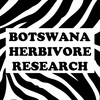resource partitioning by three sympatric grazers: zebra (equus quagga), wildebeest (Connochaetes taurinus) and tsessebe (Damaliscus lunatus)
project overview
Three species of herbivore rely on very similar habitats in the Okavango Delta: zebra, wildebeest and tsessebe. These species are often found in close proximity to one another, feeding in open grasslands. They have different digestive strategies: zebra are hind-gut fermenters, whereas the others are ruminants, which affects the quantity and quality of forage that they can digest. There are also differences in the shape of their mouths, which affects their ability to select specific grasses over others.
This project aims to understand how these three species partition the resources available to them in manner that allows them to co-exist.
The study focuses on the area between Santawani Lodge and Third Bridge, in Moremi Game Reserve
This project aims to understand how these three species partition the resources available to them in manner that allows them to co-exist.
The study focuses on the area between Santawani Lodge and Third Bridge, in Moremi Game Reserve
methods
In collaboration with the Royal Veterinary College of London, we will fit high-quality GPS collars to eight individuals of each species, which will be programmed to drop off after three months.
We will locate each individual at least once a month, when we will download the data from the collars and identify patches that were used for grazing. We will then visit those patches and record the characteristics of the vegetation there.
We will also use the data from the collars to determine the extent to which the home ranges of each species overlap.
We will locate each individual at least once a month, when we will download the data from the collars and identify patches that were used for grazing. We will then visit those patches and record the characteristics of the vegetation there.
We will also use the data from the collars to determine the extent to which the home ranges of each species overlap.
Results
This project is ongoing, and we do not yet have any results.
